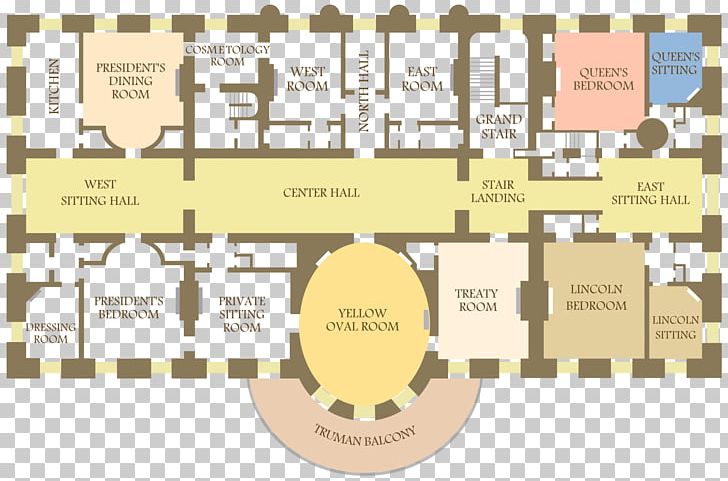The East Wing of the White House has long been a symbol of American history, power, and the evolving role of presidential spouses. Recently, it became the center of controversy when President Donald Trump announced its demolition to make way for a new ballroom. This article explores the significance of the East Wing, its historical background, and the implications of its destruction.
The Historical Significance of the East Wing
The East Wing, though not part of the original White House design, has played a crucial role in shaping the presidency. Its origins trace back to Thomas Jefferson, who added the East and West Terraces in the early 1800s. These covered walkways connected the main residence to service buildings and framed the mansion’s gardens. The East Terrace was later demolished in 1866 but rebuilt in 1902 during Theodore Roosevelt’s renovation of the White House.
In 1942, under President Franklin D. Roosevelt, the East Wing was constructed to provide additional working space and to conceal an underground bunker. This project was controversial at the time, with Congress criticizing it as wasteful. However, FDR insisted it was essential for national security.
The bunker, known today as the Presidential Emergency Operations Center, gained public attention during the 9/11 attacks and the January 6 Capitol riots.
The Office of the First Lady

The East Wing became the modern home of the First Lady’s staff during the mid-20th century. Eleanor Roosevelt, often credited with professionalizing the role, used her office space in the East Wing for activism and meetings with various groups. In the 1970s, Rosalynn Carter transformed the East Wing into the official Office of the First Lady, hiring a chief of staff and a team of employees.
Subsequent First Ladies, including Laura Bush, Michelle Obama, and Jill Biden, have used the East Wing as a hub for their initiatives, such as literacy campaigns, health programs, and education efforts.
The Trump Teardown

In July 2025, President Donald Trump announced plans to build a $300 million ballroom on the White House grounds. Initially, he claimed the East Wing would remain untouched, but this promise was quickly abandoned. On October 23, 2025, the East Wing was demolished to make way for the new ballroom.
This decision sparked outrage among historians, preservationists, and former White House staffers. Critics argued that the East Wing, which had served as the home of every First Lady since Eleanor Roosevelt, was being torn down without proper review or public input.
The National Park Service, which oversees the White House and its landscape, has a specific loophole that allows the White House to bypass the National Historic Preservation Act of 1966. A committee chaired by the Director of the Park Service is responsible for reviewing changes to the White House, but critics argue that this process lacks transparency.
Public Reaction and Controversy

The demolition of the East Wing received widespread criticism. 53% of Americans opposed the tear-down, while only 23% supported it. Historians and preservationists expressed concern over the loss of a historic structure that had been part of the White House for 83 years.
David Frum, a former speechwriter for George W. Bush, called the demolition “profoundly symbolic,” noting that it represented the privatization of public assets. Douglas Brinkley, a presidential historian, compared the destruction to “slashing a Rembrandt painting.”
Despite the backlash, Trump’s administration dismissed the criticism as “manufactured outrage.” The Treasury Department even instructed employees not to post pictures of the demolition on social media.
What Can We Expect from the New Ballroom?
The new ballroom, which will be 90,000 square feet, will dwarf the main White House and accommodate nearly 1,000 guests. It is expected to resemble the gilded ballroom at Mar-a-Lago, Trump’s private club in Palm Beach, Florida.
Trump has claimed the ballroom will be privately funded by “many generous Patriots, Great American Companies, and, yours truly.” Donors include major tech companies like Apple, Amazon, Meta, Microsoft, and Google, as well as defense contractors and communications firms.
However, the project began without approval from the National Capital Planning Commission, raising questions about the legality of the construction.
What Have Other Presidents Done to Change the White House?

Presidents have made numerous changes to the White House throughout its history. Thomas Jefferson added the east and west colonnades, while Andrew Jackson built the North Portico. Theodore Roosevelt added the West Wing, and Franklin D. Roosevelt added the East Wing.
One of the most significant renovations occurred under Harry Truman, who ordered a complete gutting of the White House due to structural issues. Other changes include the creation of the Rose Garden under John F. Kennedy and Richard Nixon’s conversion of an indoor swimming pool into a workspace for the press.
Conclusion
The East Wing of the White House was more than just an architectural feature; it was a symbol of the evolving role of the First Lady and a key part of American history. Its demolition has sparked a debate about the balance between modernization and preservation. As the new ballroom takes shape, the legacy of the East Wing remains a topic of discussion among historians, citizens, and those who value the nation’s heritage.
Stay updated with the latest news and explore today’s headlines to understand how historical landmarks are shaped by political decisions.










More Stories
US Trending News: The Amanda Kelly Story
US Trending News: What You Need to Know About the Baby Bar Exam
US Trending News: What You Need to Know About the Bar Exam